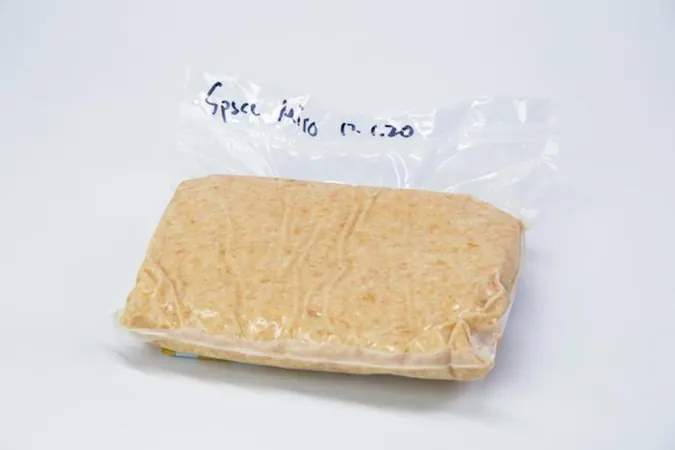
Miso Fermented in Space: A Game-Changer for Space Cuisine!
2025-04-06
Author: Ming
Introduction
Forget about bland freeze-dried meals and pre-packaged snacks—astronauts aboard the International Space Station are now proving that even delicate, fermented delicacies like Japanese miso can be created in the microgravity of space!
Significance of the Breakthrough
At first glance, this culinary breakthrough may seem like a small victory for astronauts yearning for something tasty, but the implications are far more significant. As we eye ambitious future expeditions to Mars and beyond, a fundamental challenge lies in how to provide astronauts with nutritious, enjoyable meals during long-term missions.
The ability to ferment ingredients in space could not only enhance their diet but also offer a much-needed morale boost through flavorful and comforting meals.
Experiment Overview
The journey to this revolutionary food experiment began in March 2020 when a collaborative effort from an international team of food scientists sent a carefully crafted mixture of soybeans, rice kōji, and salt to the ISS. The astronauts were tasked with overseeing the fermentation process, which would produce the savory paste beloved in Japanese cuisine.
Why Miso?
The researchers, publishing their findings in the journal iScience, chose miso for its unique microbial community and practical benefits. Miso's firm, solid structure minimizes the risk of spills, essential in the delicate ISS environment, while its rapid fermentation process aligned perfectly with their 30-day experiment timeline.
Plus, its robust flavor and high nutritional content made it a prime candidate for space food.
Results and Analysis
After 30 days, the fermented miso was returned to Earth for chemical and microbial analysis, with researchers checking for any harmful microbes and, of course, evaluating its taste.
Doubts about the success of the fermentation process arose because the ISS presents conditions significantly different from those on Earth, including microgravity and heightened radiation levels.
Thankfully, contrary to concerns, the experiment was a success. However, scientists noted some noticeable differences when comparing the space-produced miso with its Earth-bound counterparts. Variations in microbial ratios were observed, but they confirmed that the miso still met the fundamental criteria for being classified as miso.
Expert Insights
Senior researcher Joshua D. Evans from the Technical University of Denmark's Novo Nordisk Foundation Center for Biosustainability explained, "Microgravity and increased radiation could impact how microbes grow and ferment foods, and we wanted to investigate these conditions."
Taste Evaluation
So, how did the space miso actually taste? According to the research team, the miso created aboard the ISS had distinct sensory differences. It featured pronounced "roasted" and "nutty" aromas that altered the flavor profile, offering a unique culinary experience that sets it apart from traditional Earth-made miso.
Impact on Future Space Missions
This achievement reflects how far space food technology has advanced since the days when John Glenn famously consumed a tube of applesauce as the first human to eat in space in 1962. Now, astronauts are growing their own produce, like lettuce, and NASA has turned food technology development into an innovative competition.
While missions to Mars may still be years in the making, mastering the art of keeping astronauts nourished without excessive snack provisions remains crucial. This pioneering experiment with fermented miso could pave the way for a future where astronauts can enjoy wholesome, flavorful meals, truly changing the game for space cuisine!
Conclusion
Stay tuned for more updates on the fascinating world of space nutrition!


 Brasil (PT)
Brasil (PT)
 Canada (EN)
Canada (EN)
 Chile (ES)
Chile (ES)
 Česko (CS)
Česko (CS)
 대한민국 (KO)
대한민국 (KO)
 España (ES)
España (ES)
 France (FR)
France (FR)
 Hong Kong (EN)
Hong Kong (EN)
 Italia (IT)
Italia (IT)
 日本 (JA)
日本 (JA)
 Magyarország (HU)
Magyarország (HU)
 Norge (NO)
Norge (NO)
 Polska (PL)
Polska (PL)
 Schweiz (DE)
Schweiz (DE)
 Singapore (EN)
Singapore (EN)
 Sverige (SV)
Sverige (SV)
 Suomi (FI)
Suomi (FI)
 Türkiye (TR)
Türkiye (TR)
 الإمارات العربية المتحدة (AR)
الإمارات العربية المتحدة (AR)